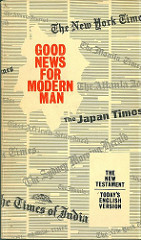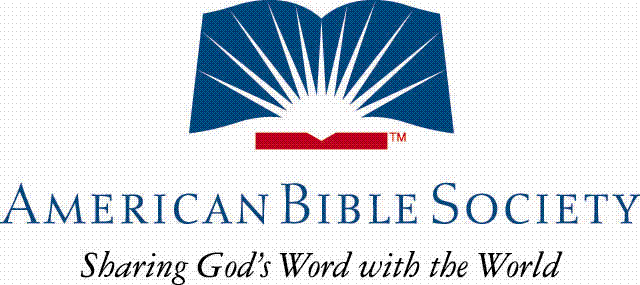 John Fea (Ph.D, Stony Brook University) is Professor of American History and Chair of the History Department at Messiah College in Grantham, Pennsylvania.
John Fea (Ph.D, Stony Brook University) is Professor of American History and Chair of the History Department at Messiah College in Grantham, Pennsylvania.
He is perhaps best known for his book, Was America Founded as a Christian Nation? A Historical Introduction (a revised edition of which will be published in September 2016). The first edition (2011) was one of three finalists for the George Washington Book Prize, one of the largest literary prizes in the United States. His most popular-level book is Why Study History? Reflecting on the Importance of the Past, an engaging guide and introduction for Christians to the study of history. published by Baker Academic in 2013.
As a blogger and podcaster, Dr. Fea is at the forefront of networking fellow historians and facilitating reflection on the relationship between religion and American history. His latest project, due out next month from Oxford University Press, is along those lines: The Bible Cause: A History of the American Bible Society. (You can read Thomas Kidd’s review of the book in The Weekly Standard.)
He recently answered a few questions I had about the American Bible Society (ABS), its origins, context, translations, and its relationship to Catholics, technology, nationalism, and more—as well as what it’s like to have academic freedom while writing an institutional history.
I suspect many readers don’t know that there is such a thing as the American Bible Society. Can you give us a thumbnail sketch of the organization’s history: when was it started, what does it do, and does it still exist today?

The American Bible Society (ABS) was founded in 1816 for the purpose of publishing, translating, and selling Bibles, “without note or comment,” in the United States and, eventually, around the world. Until 2015, the ABS was located in New York City.
Last summer it moved its headquarters to Philadelphia’s Independence Square just in time to celebrate its 200th anniversary in May 2016. Today it is a Christian ministry focused less on publishing and translating and more on what the leaders of the ABS describe as “scripture engagement”—teaching people who to use the Bible in their everyday lives.
Can you put the founding of the ABS in context for us, especially in relationship to other Christian benevolent societies founded after the Revolution and before the Civil War?

The ABS was founded by evangelical Christians, many of whom were Federalists and former Federalists. They wanted to distribute the Bible as a way of spreading the good news of the Gospel and strengthening the Christian character of the American republic. Many of these founders, including Elias Boudinot, the first President of the ABS, were concerned about moral decline in the United States.
The ABS emerged out of the evangelical revival described by historians as the ”Second Great Awakening.” It was one of several benevolent societies born during the revival. Some of these societies included the American Sunday School Union, the American Temperance Union, and the American Anti-Slavery Society.
What Bible translations are associated with the ABS?
Until the 20th century, the ABS distributed the King James Version of the Bible because it was the translation, to use the words of the ABS constitution, that was “in common use.” Eventually the ABS sold Bibles in the Revised Version, the American Standard Version, and the Revised Standard Version. (The decision to sell the RSV was a controversial one).

It was not until the 1960s and 1970s that the ABS produced its own translation–Today’s English Version. The New Testament version of Today’s English Version was finished in 1966 and marketed in a paperback edition titled Good News for Modern Man. This New Testament translation quickly became the bestselling paperback in the American history, surpassing Dr. Spock’s Baby and Child Care. In 1976, the entire Good News Bible (Old Testament and New Testament) was released. Today’s English Version was controversial among some evangelical groups because it employed a method of translation known as “dynamic equivalence.” The brainchild of ABS translator Eugene Nida, dynamic equivalence was less a “word for word” approach to translation, and more of a “meaning for meaning” or “thought for thought” method. Many evangelicals feared that such an approach to translation undermined their belief in the verbal plenary inspiration of the Bible. Nida’s goal was to make the Bible more accessible to readers. The Good News Bible was written in easy-to-understand prose. In this sense, it was unlike any other Bible on the market.
In the 1990s, the ABS published another dynamic equivalence Bible called the Contemporary English Version. It was translated at a lower reading level than the Good News Bible.
As a non-denominational Protestant organization, what has been the relationship of the ABS to the Roman Catholic church, and vice-versa? Has that changed over the past two centuries?
At the New York City meeting in which the ABS was founded in 1816, Catholics were invited to participate in its work. But for much of the 19th and 20th centuries the ABS was a largely Protestant organization. In the 1840s and 1850s it participated in the strident anti-Catholicism that defined American life in these decades. It was not until the 1960s, after Vatican II, that the ABS and the Roman Catholic Church began cooperating on Bible translations. The Catholic Church, for example, endorsed the Good News Bible and the ABS began publishing Bibles with the Apocrypha. Today the ABS works closely with the Catholic Church in Bible distribution and scripture engagement.
We hear presidential candidates talking about “making America great again.” Was that part of the original purpose for ABS? In what ways can this be problematic?
As I write in the introduction to The Bible Cause, the book is both a history of the American Bible Society and a history of theAmerican Bible Society. It is hard to separate the religious work of the ABS from its mission to strengthen the Christian identity of the United States. The ABS never saw this dual agenda as problematic. Its leadership worked closely with American presidents and other political leaders to advance the cause of a Bible-centered nation. The founders of the ABS were much more concerned with the direction that country was moving under the leadership of the “godless” Jeffersonian Republicans than they were with somehow turning back the clock to a Christian golden age. Today the ABS is hesitant to use “Christian nation” language, probably because it is so politically-charged. But the leadership is still interesting in strengthening the American republic with a healthy dose of scriptural teaching.
How did the ABS adapt over the years to changes in technology and to changes in cultural attitude about the Bible?
The American Bible Society has always been at the forefront of innovation, both in American Christianity and the nation as a whole. The ABS was and is cutting-edge. It was the first publisher in the United States to use steam-power presses. It quickly embraced Braille, talking Bibles, direct marketing, postage seals, music videos, and digital scripture products. I think it is fair to say that this spirit of innovation continues today as the ABS staff seeks out new ways to get people engaged with the message of the scriptures.
What is the current role and size of the ABS, both domestically and abroad?
The ABS is a ministry based in Philadelphia with a $300 million endowment and a mission to engage 100 million Americans with the Bible by 2025. Internationally, they work with the United Bible Societies in the distribution of Bibles and the promotion of scriptural engagement.

The ABS asked you to write this history of their organization. As a historian, how do you navigate the waters of independence when writing an official institutional history?
This has been a unique experience. I was not interested in writing an “authorized” or “official” history of the American Bible Society. When I was approached about writing this history I asked for full academic freedom to tell the story in the way that I thought it needed to be told. The ABS leadership agreed and were willing to give me full access to the archives of the organization. As I wrote the book I was ever aware of the fact that the ABS was taking a real risk here. I think The Bible Cause is a largely sympathetic account of the organization, but some in leadership at the ABS were not always pleased with how I told and framed the story. In the end, I am not sure some folks at the ABS understood the difference between a scholarly history and a promotional piece.
Based on your experience, do you have any advice for fellow historians seeking to write an accurate institutional history—a genre not typically thought of as a “page turner”?
The jury is still out on whether or not I am the right person to give advice about how to write a compelling history of an institution. Having said that, I would offer two related pieces of advice.
First, I tried to avoid getting too caught up in the details. I did not try to cover every program and initiative that the ABS sponsored over the last two-hundred years. This is not a comprehensive history of the ABS.
Second, I tried to connect the story of the ABS with the story of the United States and the story of American religious history. I hope that such an approach offers relief to the tedium often associated with institutional history.


















